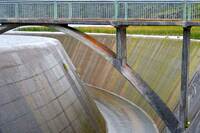- England
- Scotland
- France
- Holland
- Germany
- Italy
- Spain
- Portugal
- USA
- China
- Japan
- India
- Iran
- Advice
- Gardens
- England
- Scotland
- France
- Holland
- Germany
- Italy
- Spain
- Portugal
- USA
- China
- Japan
- India
- Iran
- Advice
- Garden Tours
Book: Landscape Planning and Environmental Impact Design: from EIA to EID
Chapter: Chapter 3 Context sensitive design theory
Let us start with a dilemma. A rich Australian businessman has purchased a farm on a hill, near a European capital city. He wants to endow a church and residential centre for a new religious sect, to have the buildings designed by a famous architect and to surround them with a Eucalyptus forest, to remind him of New South Wales . He believes there is a local need for the development and that it will be a visual triumph, because of the glorious site and the anticipated harmony between the blue-grey foliage of the Eucalyptus and the polished steel of the architecture. Local residents furiously oppose the scheme. They want the farmland to be retained and prefer local materials to stainless steel. Conservation groups like the idea of a new forest but oppose the choice of species and buildings' architectural style. Architects believe the church design will be an important land mark in the history of their art, deserving a magnificent location. Tourism planners believe the church will attract visitors from afar. Other issues raise similar problems:
-What aesthetic and ecological criteria should influence the design of new roads? These questions have multiple dimensions: administrative, aesthetic, ecological, historical, cultural, recreational, financial, climatic, hygienic, legal, and so forth. But a great question of public policy looms above them: WHEN should society intervene? It might be assumed that:
The twentieth century has proved the falsity of these assumptions. Anyone who contemplates the outrageously expensive environmental damage which public river and drainage authorities have done to every city in the industrialised world must tremble to recollect that the assumption was ever possible. Public and private projects can be good or bad in environmental terms. So let us ask: WHEN should the public intervene? HOW should the intervention take place? WHAT should be achieved by intervention? These questions will be addressed in turn.


